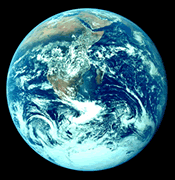| Science 10 |  |
 |
Module 6: Earth Science
Section 6.1: Learning About the Earth
6.1.B: Rock Types
Bedrock Geology of the Fulton Lake Map Area,
North-Central B.C.
Example of a ‘real-life’ example
of a geological map from the BC Ministry of Energy, Mines and Petroleum
Resources. The Geological Survey Branch Mapping Project has created
geological maps of many areas in BC.
http://www.em.gov.bc.ca/dl/GSBPubs/OF/1996-29/OF1996-29c.pdf
Geologic Maps
Information on Geologic Mapping from
the US Geological Survey
http://www2.nature.nps.gov/geology/usgsnps/gmap/gmap1.html
An Introduction to Remote Sensing
It’s interesting to note how different
maps can be produced from one image, depending upon the information
required by a map user!
http://www.cmis.csiro.au/rsm/intro/
6.1C: Seismology
National Geographic ‘Forces of Nature’
Go to the website below and select ‘earthquakes’.
Watch step 5 in the sequence—it’s called ‘Measurement
and Recording’. Here you see a cross section of an earthquake’s
epicentre and focus (also called the hypocentre). Start an earthquake,
watch waves radiate outwards and keep an eye on the seismograph to
see what happens when the waves reach the recording station!
Next, try step 6 (Locate an earthquake) in the sequence. Try this interactive
animation and actually locate an epicentre using seismograph readings.
http://www.nationalgeographic.com/forcesofnature/interactive/index.html?section=e
Savage Earth
View the P- and S-wave animation. This
animation uses side-by-side images of earth’s surface and interior
to recreate the wave movement triggered by an actual 1994 earthquake.
http://www.pbs.org/wnet/savageearth/animations/earthquakes/index.html
Volcanoes of Canada
Learn about types of volcanoes and eruptions,
their hazards, how they are monitored, what we do about them, and how
to become a volcanologist’.
http://gsc.nrcan.gc.ca/volcanoes/index_e.php
Volcano World
K-12 resource featuring images of volcanoes,
current eruptions, ‘today in volcano history’ and a volcano
locator.
http://volcano.und.edu/
Section 6.2: The Geological Time Scale
Lesson 6.2A: Investigating Fossil Evidence
Extinction!
Preview available addressing the relationship
between human activity and the extinction of wildlife species.
http://www.pbs.org/wgbh/evolution/extinction/index.html
The Formation of Fossils
Examples of body fossils.
http://www.scienceviews.com/dinosaurs/fossilformation.html
The Cambrian Explosion’
Information on fossil preservation.
http://www.pbs.org/wgbh/evolution/library/03/4/l_034_02.html
6.3A: Theory and Evidence of Plate Tectonics
Tectonics 1.0
Try an interactive puzzle—move
and rotate continents to go back in time and reconstruct the ancient
supercontinent of Pangaea
http://atlas.geo.cornell.edu/education/student/continental_puzzle.html
6.2B: Measuring Geological Ages
“Unusual Rock Upsets Geology Theory”.
National Science Foundation, Frontiers, October 1996.
Information related to identifying scientific
hypotheses, theories and laws
http://www.nsf.gov/news/frontiers_archive/12-96/12rock.jsp
Section 6.2: Final Assignment: Concept Mapping
Freemind
Freemind is a free, open source mind-mapping
software application.
http://freemind.sourceforge.net/wiki/index.php/Main_Page
Inspiration
Inspiration software provides a free
30-day trial version of concept mapping software along with samples
and other graphic organizer ideas.
http://www.inspiration.com/vlearning/index.cfm?fuseaction=concept_maps
The Concept Mapping Homepage
Scroll down to see a sample concept map
as well as a list of links to downloadable software. If you choose
to use a software program, select one that is either free or that offers
a free time trial.
http://users.edte.utwente.nl/lanzing/cm_home.htm
Section 6.3: Plate Tectonics
6.3B: Tectonic Plate Interactions
Plate Borders and Mountain-Building
Click on each image for an animated demonstration
of plate movement.
http://www.seed.slb.com/en/scictr/watch/living_planet/mountains.htm
Mountain Maker, Earth Shaker
Pull the plates apart and push them together
and watch what happens to the Earth.
http://www.pbs.org/wgbh/aso/tryit/tectonics/#
Exploring Earth Visualizations—Transform
boundary
Animations of processes that occur along
plate boundaries.
http://www.classzone.com/books/earth_science/terc/content/visualizations/es0804/es0804page01.cfm?chapter_no=visualization
Hotspots Animation
A good example of hotspots, since this
animation shows the build-up of islands as a gradual process.
http://www.geo.wvu.edu/~donovan/geol101/animations/55.swf
6.3C: Impact of Tectonic Activity
National Geographic Forces
of Nature: Volcanoes
To see examples of each
type of volcano, visit the 'Forces of Nature' site created by National
Geographic; choose the 'Volcanoes' icon and read the 'Lab' tabs 1-6.
Try animating each type of volcano for yourself.
http://www.nationalgeographic.com/forcesofnature/interactive/index.html?section=e
Tsunamis and Earthquakes: Life of a Tsunami.
US Geological Survey
Images an explanation of tsunamis, with
links to Quicktime animations and additional resources on tsunami preparedness.
http://walrus.wr.usgs.gov/tsunami/basics.html
Tsunami Attack—PBS
Animation and explanation of tsunamis.
http://www.pbs.org/wnet/savageearth/animations/tsunami/
Tsunamis
Learn more about how and why they happen,
and what to do in case
of a tsunami.
http://www.pep.bc.ca/tsunamis/index.htm